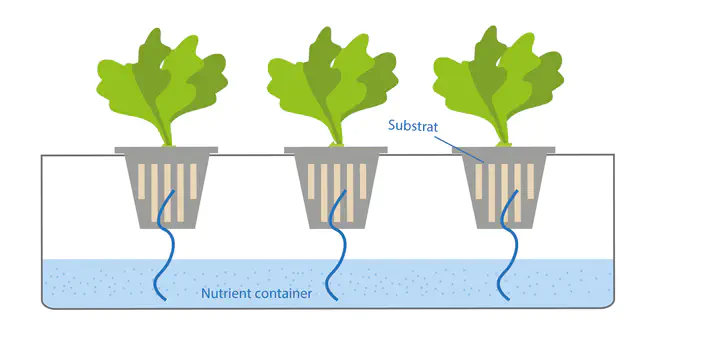Hydroponics
 Image credit: hydroponic-urban-gardening.com
Image credit: hydroponic-urban-gardening.com
Whenever you think of agriculture you imagine a land filled with green. Stop there! can you believe that you can grow your food in a vase that is kept near you? Agriculture has developed so much that we can think of a world without soil. In the current situation, farmers are doing intensive agriculture and the consequence is poor soil health. Therefore, to improve the deteriorating condition of soil health we need another alternative medium for growing plants.
To overcome constraints like water availability, small land holdings, disease, pest incidence, problematic soils, etc., Hydroponic techniques were innovated. Basic Requirements of Hydroponics: Growing media, Nutrient solution, Temperature, Air, Supporting materials, Water, Mineral nutrient, and Light.
Hydroponic crop production has significantly increased in recent years worldwide, as it allows more efficient use of water and fertilizers, off-season production, and better control of climate and pest factors. Furthermore, hydroponic production increases crop quality and productivity, which results in higher competitiveness and economic growth. All essential nutrients are supplied to hydroponic plants in the form of nutrient solution, which consists of fertilizer salts dissolved in water. This garden is less dirty than a normal garden because it does not require soil. As a result, there will be no thought of cleaning or killing plant insects. The main source of food for these garden plants is water and water nutrients. In such a garden, water and necessary nutrients will be provided at the root of the plant, so that the plant will survive day after day and grow quickly. Let’s take a look at some types of hydroponic gardens.
Wick System: This type of gardening is done over a water reservoir with coconut husks or perlite (small stones). Coconut coir or perlite here draws water and supplies it to the plant roots. Reservoir water provides essential nutrients to plants.Drip System: This system requires only a small pump and a timer. Water flows through the drip line at the base of the plant. When the roots of the tree are dry, the timer will give the signal to run the pump. Once the pump starts running, the nutrient solution will reach the roots of the plant.Aeroponic system: In this case, the plant roots are dependent on air. The nutrient solution is applied to the plant’s root through continuous misting. Nutrient Film Technique: Plants are grown in large channels where there is a regular supply of water. A timer and pump are required to keep the water flowing.Ebb and flow system: In this method, small stones are placed in a tray, and nutrient-rich water is fed into it. Trey’s plant then gets its food from that water. The most successful plant grown in hydroponic techniques is leafy greens, herbs, strawberries, blueberries, tomatoes, spinach, radish, etc.